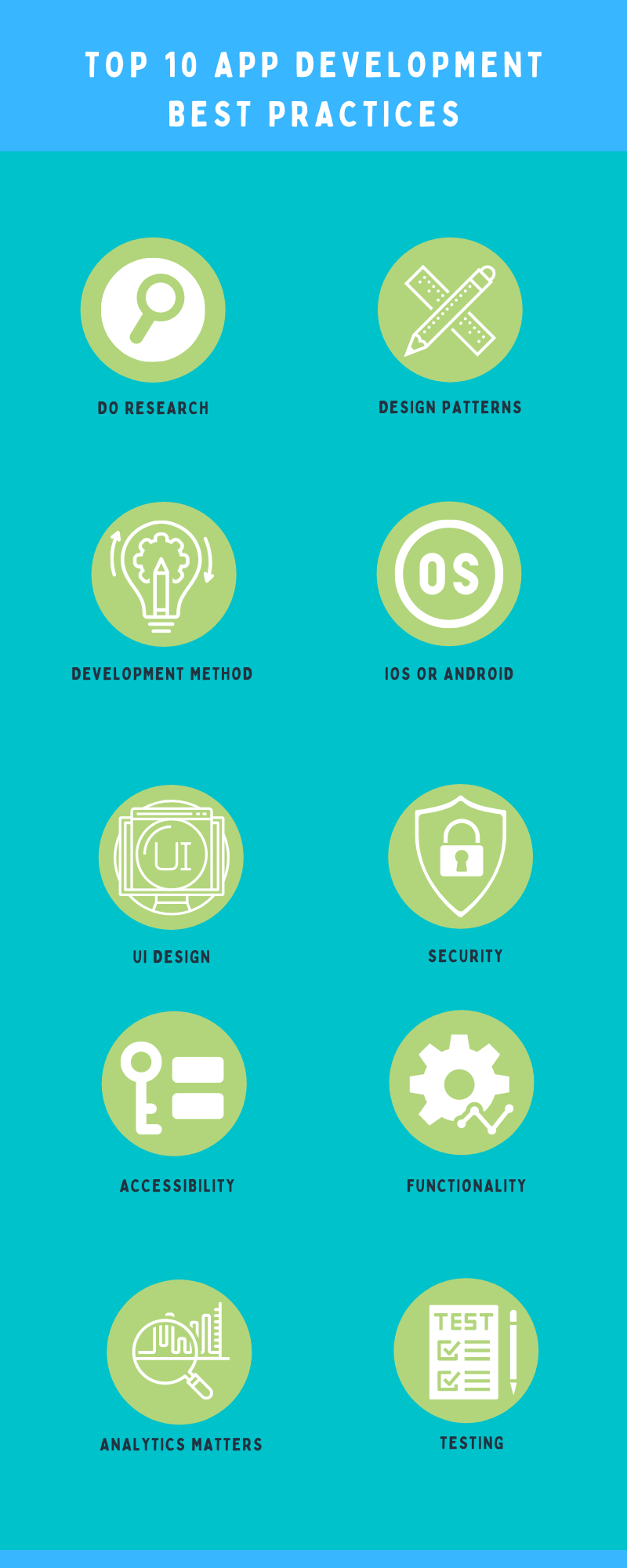App development has evolved significantly in recent years, and now the world is filled with the best apps and software. Apps like Instagram, TikTok, and Snapchat have brought people together across continents — through social media — as never before. It’s not just the younger generation that is embracing App development; businesses are now recognising its value as well. Businesses that can’t afford to develop their own Apps now rely on experts to create them.
Mobile Apps are poised to dominate the world of software applications in the near future. The trend is so strong, you can see it worldwide. There are various ways that App developers can get on board without costly manuals or coding knowledge. Whether you’re interested in developing your own Apps for your business or just getting started with an entrepreneurial endeavour of your own on the side this blog post is for you. But with creating Apps, there is also the importance of App development practices that need to be taken into account. In order to ensure the best possible experience, planning is essential.
So, here are a few things to keep in mind when actually creating those mobile Apps. The first thing to think about is your user. Is your App going to be for a mobile device or a mobile website? Are you going to be targeting a specific culture? Are you going to have the same software provider for multiple platforms or will you have varying versions? All of these questions need answering before you start developing anything.
To answer these questions better, we look at defining App development best practices, and what we know are the top 10 best App development practices.
What are App Development Best Practices?
Mobile technology has led to astounding developments in the world of business. Applications are being created at an alarming rate, and user experience is taking on increasing importance. One of the major advantages to having an application is being able to offer your customers something they can’t get anywhere else. This has led to an astounding proliferation of mobile applications, particularly in the field of retail.
App development best practices are detailed guidelines which are intended to boost performance, security, and user experience. They are being established to ensure that your business benefits from the advantages of the mobile revolution. There are different types of applications that can be developed with varying levels of difficulty. Which one you choose depends mostly on the types of features you want to include, resources available, and personal preferences.
The creation of an application involves the use of several development and programming languages, as well as design skills. An App can be created with varying levels of difficulty, but always remember that the most important thing is to create a product which meets your customer’s needs.
Here are the Top 10 App Development Best Practices
Writing a program is not as easy as it may sound. Developers have to be very careful when developing applications, especially if they want to avoid any bugs and errors. One of the best things you can do as a developer is writing your code in such a way that it follows certain best practices.
One of the most important considerations for both startups and large corporations is the development and maintenance of Apps. Besides building a project with a highly-effective build and test pipeline, it is also vital to incorporate established App development best practices into your processes. These best practices will help improve efficiency, increase performance, reduce crashes, and reduce the amount of code that needs to be written in order to produce an App with desired features.

Here are 10 App development best practices:
1. Do Research
The first and most important thing you should do as a developer is research. As such, you should spend time researching best practices and methods of developing reliable code. You can use many resources such as StackOverflow, Google, and search the internet to find the right solutions to your problems.
2. Design Patterns
Following proper design patterns will make your codes easier to maintain. These are styles of programming where developers reuse existing structures, components, or modules of their programs with slight modification. For example, there are plenty of standard frameworks available on the web that provide common programming structures like string templates, containers, filters or adapters, respectively.
3. Development Method
It is very important for developers to set up a development method. You will have to decide if you want to build a native, hybrid, or web-based mobile application. A native-based mobile App is a stand-alone application that’s installed on a device. On the other hand, a web-based App provides a mobile-friendly site that runs from the browser. As for hybrid applications, these Apps are developed using a combination of web and native technologies.
4. iOS or Android
If you are going the native route, you’ll have to choose between iOS or Android. It is now possible for you to develop applications for both platforms with React Native and Flutter, respectively. Flutter, of course, is the best choice since it is far more popular since it is open source, has a quick development cycle, and has a reduced development time.
5. UI Design
UI design is very important as it determines better or bad experiences for users of your program. This is why it is vital for developers to understand the basics of good design, especially when it comes to mobile programs. Fortunately, there are plenty of resources out there that can help you learn about good UI practices and principles such as user interaction and working with colours and typography, respectively. Consider the fact that great design translates into a better application or mobile App because it will attract more users and attention to your product. Users tend to download the Apps they like and use them over time.
6. Security
It is very important for you to make sure your App is secure. It is a must for developers to pay attention to security issues, especially when it comes to storing data locally. In fact, there are plenty of frameworks that let you encrypt your data before storing it in the device’s file system. It is very important for you to make sure your App is secure. This means that users of your program should control their personal or critical information. Developers can secure their applications by using end-to-end encryption, which makes it possible for users to control the shared data.
To secure app, you need a Code signing certificate like Comodo code signing certificate or DigiCert code signing certificate or a Sectigo code signing certificate. It ensures that the code is not modified once it is signed.
7. Accessibility
Your App needs to take into account all users including those who are differently-abled. To ensure you address all user needs, it is always best to include accessibility features in your application. Accessibility features are built-in functions that are not only helpful but also complimentary with the design of your mobile App.
8. Functionality
Functionality matters as it helps you deliver a valuable product or service to your customers or users. Functionality is app development is vital. The app should have a clear purpose, use an easy to understand user interface and be easy to navigate. Simplicity and intuitiveness is the name of the game, and a proper UX is important. For instance, if the App is too cluttered or confusing to use, users will just uninstall it.
9. Analytics Matters
In App development, you need to ensure that your App is user friendly, fast and consistent. You can achieve this by monitoring your App performance with various tools. These tools include analytics software that help you track the errors and bugs present in the program as well as view the response time of your users. It is also important for you to monitor user behaviour as it will help you learn more about how they use your App or mobile application.
10. Testing
Testing is extremely important for all mobile applications, especially when it comes to enterprise level, open source, and custom mobile Apps. As such, make the most of every opportunity to test every aspect of your mobile application including the UI and functionality. Most importantly though, don’t forget to add a test suite or continuous delivery pipeline. Good testing enables you from catching bugs earlier on in the development cycle which will save you valuable time and money in future development cycles.
Conclusion: The Challenge of Mobile App Development
It all starts with an idea. App development can be a pricey proposition. To be successful, you have to have a good idea for an App that is not only original, but also necessary. Mobile Apps are one of the most powerful tools available to business owners today. They are a great way for companies to reach out to their target audience with ease and provide new services easily. Mobile marketing is growing rapidly, which means it offers users more ways than ever before to interact with online brands.
On the downside, developing a mobile App can be challenging due to time constraints and lack of access to code libraries. We’ve written – What are App Development Best Practices in 2021? – to extend some useful knowledge to you. These learnings are what we’ve used to craft intuitive and successful Apps for our clients across many industries in Australia. We’d love to hear your viewpoint, and encourage you to engage with us in the comments below.






Keep up the great work! Thank you so much for sharing a great posts.